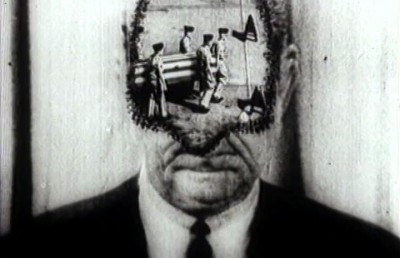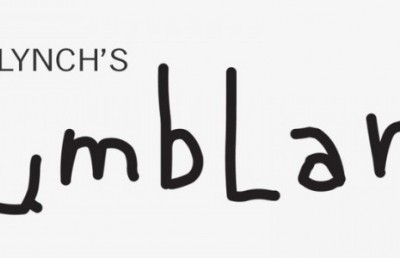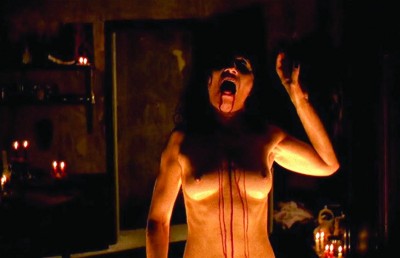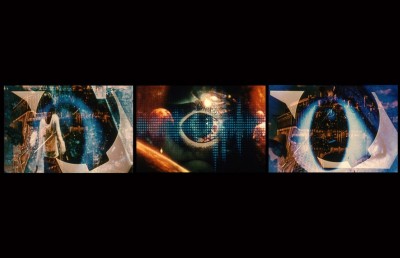Cinema 16
Global Shorts
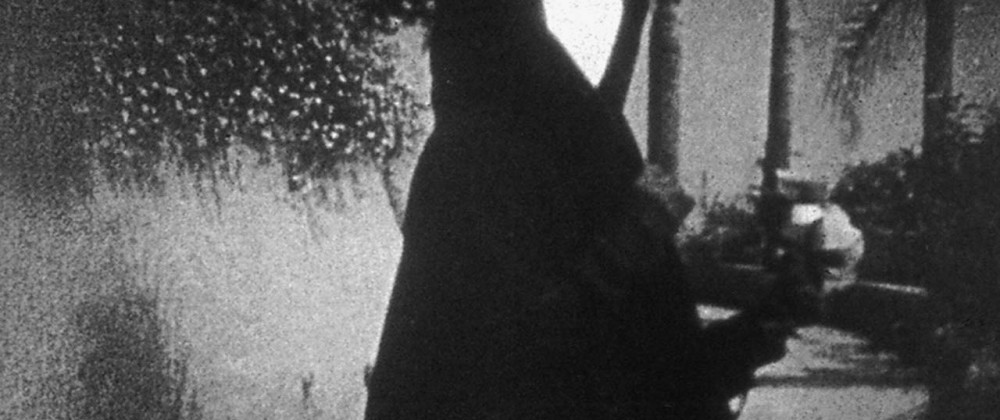
Fans of the short film will rejoice over the three DVDs released by Cinema 16, with each volume specifically dedicated to films from United States, the UK and Europe. Cinema 16, which is the brainchild of Irish filmmaker Luke Morris, has done a wonderful job compiling an interesting mix of recognizable brand name directors, younger directors, and up and coming directors. Combined the three DVDs represent the full range of what the short film has to offer in terms of genre (experimental, documentary, fiction, mockumentary, animation) and format (super 8mm, 16mm, 35mm, DV). Each DVD will keep you busy for hours, as each one includes over 200 minutes of film (with multiple subtitle options) and most come with a commentary track. It must be a good indication of how committed the directors were to this project, that nearly every director, even the big name ones, were on board to provide a commentary track. And when the director was not available (or in some cases dead), Cinema 16 chose informed film critics and historians. One of the fascinating aspects of watching short films from established directors is seeing the imprint of thematic, formal or stylistic concerns developed in more mature works. Or the opposite, seeing films which have little in common with their later films. There are examples of this in many of the films in the three DVDs.
The best short films know how to work to the strengths –execution of single ideas that would not sustain a longer work and blunt, potent punchlines– rather than limitations –character and plot development– of the form. In many of the commentary tracks we hear directors reiterate how the genesis of the film came from a single thought, idea, or rhetorical question. For example: A man wakes up, goes to the bathroom, then returns to his bedroom to see himself waking up (Copy Shop 2001, Virgil Wildrich, Austria); What would we discover if we concentrated a camera on a drummer for the duration of an orchestral performance (Le Batteur du Bolero France, 1992, Patrice Leconte)?; What would a society with headless people be like (L’Homme Sans Téte 2003, France, Juan Solanas)? How would two down and out alcoholics respond to an urgent call for help (Fridge 1996, Peter Mullan, Scotland)? What would happen if the ethics of American football were transposed onto the office environment (Terry Tate: Office Linebacker U.S., 2003, Rawson Marshall Thurber)? How would you represent a woman terrified by sunlight (Nocturne 1980, Lars von trier, Denmark)? Or, what would happen if a man truly believed his dog was talking to him (My Wrongs#8245-8249 and 117 2003, UK, Chris Morris).
British Short Films
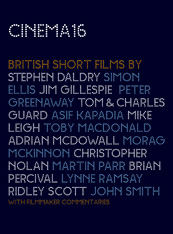
The British volume gets off to a thumping start with relative unknown Brian Percival’s About a Girl, which demonstrates the level playing field of the short film. The film is stylish look at working class North Manchester which veers you in one direction (coming of age tale) and then startles you with a potent ending. The structure cuts between tracking shots of a precocious, chatterbox 13 year-old girl walking and talking about her uneventful life, and snippets of her singing and dancing to Britney Spears tunes with her friends (with the lyrics “I’m not that innocent” a fitting foreshadowing gesture) and interacting with her separated parents. In the final scene the girl is walking along a park river, and then casually tosses a bag holding a fetus into the river. The scene cuts to an underwater shot of the floating fetus. On his commentary track director Percival tells us that he slowly seeped out the colors during her walk along the water, making it bluer, more neutral, and grimmer, until the final crane up as she walks away, where the color comes back in an ironic gesture of uplift and joy.
Four other shorts on the British volume are variations on coming of age tales, Lynne Ramsey’s Gas Man, Adrian J. McDowall’s Who’s My Favorite Girl?, Stephen Daldry’s Eight and Asif Kapadia’s The Sheep Thief. Ramsey’s Gasman continues along the bleak path set by Percival’s film. Like About a Girl, Gasman deals with children living in broken families, a fact which may account for why the camera shows only fragmented body parts until three minutes into the film. A man takes his two children, a little girl and a boy, out to a Christmas work party by way of over strewn train tracks –a unsafe place for children to be walking– but an apt location to render the sense of rootlessness which figures into the characters. The father encounters a woman who passes on two other children who join them for the outing. The daughter asks her father who the two children are but he does not respond. Once at the pub we see other parents and children dancing and socializing. The daughter becomes jealous when she sees the other girl on her dad’s knees, and hears her call him “daddy.” Unable to understand the situation she reacts angrily and tries to pull the other girl off his lap, while repeatedly saying, “She called you Daddy?”. The scene cuts ahead to them back on the train tracks at night, as the man meets with the woman from earlier (who we now realize is his first wife or lover and mother of the other two children) and returns the children to her. The film ends on a sad, melancholic note, with a shot of the daughter with her back to the camera staring at the other woman and the two half-siblings she never knew as they walk away between the train tracks.
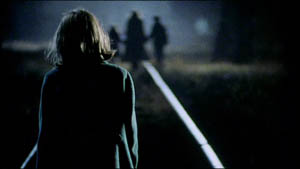
McDowall’s coming of age story Who’s My Favorite Girl? is of a much lighter tone, dealing with two Scottish boys entering puberty. The slightly younger of the two boys, short, with a carrot top head, is meek and lacking self-confidence compared to the taller, more assured friend. The carrot top is pegged as a ‘momma’s boy’ in opening scene, where the mother embarrasses him in fron of his waiting friend by calling him back for a kiss. On their walk to school his friend taunts him over the kiss. Throughout this opening a restless camera continually links the boys with panning movements that represent their carefree nature. The playful tone is rendered continually through clever formal touches, like the moment where the older boy recounts the embarrassing time when he got an erection during swimming class. The scene cuts back from the flashback of the comical incident to a low angle framing of the boy lined up with a huge smokestack between his legs as he swings back from a fence railing. Once at school the meek boy is set up to meet a girl after school who initiates him into the pleasures of French kissing. In the final scene the opening is repeated, only now the boy, brimming with confidence, shocks his mother with a sensuous full-lip kiss
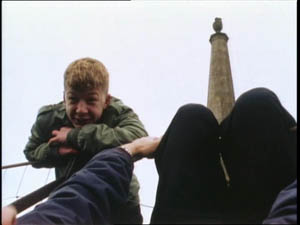
One of the highlights of this volume is Kapadia’s 16mm The Sheep Thief, which is in some respects a warm-up for his award winning debut feature, The Warrior (in terms of location, visual style, the minimal use of dialogue). The film starts with an ambiguous flashback structure: an overhead shot of a young boy lying on a desert ground. What transpires is a flashback to the incidents leading to this situation. A young teenage boy steals a sheep at night, but is chased down by the owner. The boy turns as his pursuer nears and fells him with a vicious blow to the head with a stick that has a nail sticking out of it. In the commentary director Kapadia tells us that this scene is important because it establishes that this boy is far from an innocent. He is eventually apprehended and ‘branded’ a thief with a marking on his forehead and then left to die in the desert. At this point the film meets up with the time of the earlier shot and becomes linear. An extreme close-up shows the boy’s dried, battered, weathered face. Drops of rain fall onto his face and revive him. The feral boy comes across a mother and boy and helps them repair their broken cart. He slowly gains the trust of the woman, who asks her village elder if she can take him into the community. Kapadia depicts the growth of the relationship between the boy and his adopted family, a mother and her two younger male children, with a neo-realist attention to the mundane and everyday, but with of interjections of aesthetically beautiful landscape shots that pull us momentarily out of the trivial. The duplicity of the boy is revealed once again when we see him steal a cup from a temple and later cover up for it by saying that he rescued the cup from two other boys who stole it (to cover up for the bruises he received from these same two boys when they caught him stealing the cup). The elders remove the red head scarf the boy has been wearing to conceal his brand and force him to leave by morning. In the penultimate scene the two younger village boys, wearing similar red head scarves, lie down on the desert floor with the older boy. An overhead closeup reveals what may be a tear running down the feral boy’s face. A moment later rain drops begin to fall on his face –recalling the earlier scene– and then a strong shower rains down on them. The feral boy, with his sleight of hand magic tricks, false feats of bravery, and street smarts, has become a hero to the two younger village boys. In the final scene the mother lies to her children about the real reason the boy is leaving them, preferring to maintain the ‘heroic’ image of him in their eyes. The mother tells them he is “going on to help another family with his magic.” Shot on location in India, Radistan, Kapadia’s 16mm camera brings out the beautiful colors of the environment –the golden shawls, red dresses, bright desert sand, colorful fruits– bringing out both a magic realist and ethnographic quality.

For the auteur lover two of the more highly anticipated shorts on the British volume are no doubt Mike Leigh’s The Short and the Curlies and Ridley Scott’s Boy & Bicycle. Neither disappoints. The Short and the Curlies is a funny character study that deals with Leigh’s favorite subject, the working class, but minus the vitriolic acidity of his later work. The film features engaging ensemble acting, with Alison Steadman as Betty, a chirpy hairdresser; Wendy Nottingham as her sulking daughter Charlene; and Sylvestra Le Touzel and David Thewlis as the newly formed couple Joy and Clive. Joy, Betty’s favorite (and seemingly only) customer, changes her hair style as often as the scene’s change. Clive is a nerdy but likeable young man who is a compulsive teller of (mainly) bad jokes and riddles. He lives to make people laugh. The film intercuts between Joy’s frequent visits to Betty’s salon and her evolving relationship with Clive. In fact Leigh sets up a coupling parallel with a chirpy, overly loquacious person partnering a quiet, sullen person. Betty is the chirpy one to her sullen daughter Charlene and Clive the chirpy one to the ironically named Joy (in terms of her demeanor, the term understatement is an understatement). One half of both pairs is twitchy and nervous. The compulsively chatty Betty is also often seen scratching an itch; while Clive is always twitching, laughing, moving his legs nervously, and shifting, to Joy’s static demeanor. Whereas Clive is always joking and punning, Joy is always talking about pharmaceutical products. The one scene where the separate ‘couples’ interact is at the salon shop. Clive enters the salon with a joke:
“Knock knock.”
“Who’s There?”
“Isabelle.”
“Isabelle who?
“Is the bell working cause I’ve been ringing it for ages.”
Betty finds this exchange wonderful: “Oh that makes me laugh. I want to take him home with me Joy.” The performances are great because the characterisations are driven home by both dialogue and physicality. An example of the latter is the way Betty lunges forward while she walks, a symptom of having to always arch and bend over during her job. The honesty of the performances are greatly aided by the film’s attention to place. On the commentary track Leigh stresses that the film is also about the architectural landscape, the houses, buildings, streets, and spaces where they live and walk and breathe. This segues nicely into a passage where Leigh describes a camera movement that follows Betty to her home but then dollies back as she enters the door to frame the whole house/flat.
A sense of space and place is what Scott’s Boy & Bicycle is all about. The majority of the film consists of a teenage boy (played by Ridley’s younger brother and future director Tony Scott) cycling around the North East England city of Hartlepool. The film opens with an interior scene of a voice-over accompanying 360 degree pans around a room taken from the POV of someone lying on a bed (the panning movements are similar to those of Michael Snow’s in Standard Time but slower). The boy leaves his house and begins cycling around empty, early morning streets. The film combines tracking shots following the boy on his bike and expressive shots from the bike’s point-of-view. Echoing the early city symphony films, but from a singular perspective, the film is an exercise in style: contrasting geometrical shapes and architectural structures; bridges, train tracks, smokestacks; and an empty amusement park (an homage to Lindsay Anderson’s Free Cinema classic, O Dreamland?). On the commentary track Scott tells us that the city tracking shots were influenced by similar shots in John Schlesinger’s Billy Liar and David Lean’s Great Expectations.
Some of the other worthwhile films on this collection are: Peter Greenaway’s Dear Phone, a template for his comic epic The Falls (1982). Christopher Nolan’s homage to The Incredible Shrinking Man, Doodlebug, an ambient three minute nightmare about a man who tries to stamp out an unseen bug in his kitchen with a shoe, only to discover that the ‘bug’ is a miniaturized version of himself. The film delivers the proverbial short-film knock-out punch ending with a cut to a low angle shot of the man about to squash his miniature self that reveals yet another larger version of himself behind him! And Toby Macdonald’s engaging (if ultimately one-note) Breathless homage, Je T’aime John Wayne.
American Short Films
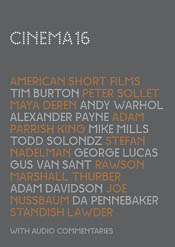
One of the first things that struck me as I was watching the American short film collection is that nine of the sixteen films were made in New York city. For at least six of these nine films the identity of New York city played an important function in terms of mood, theme, or subject. Four of the remaining seven films were made in Los Angeles. One of the many points that can be made about this division is the often stated contrast between films made by students (or graduates) of NYU and students (or graduates) of USC or UCLA, with the films made by the former being more personal, artistic, and less technically polished than their more technical accomplished and commercial minded Californian counterparts. For the most part this division holds up with the short films on this collection, especially when contrasting, for example, the two NYU films Five Feet High and Rising and Feelings with the USC films Terry Tate: Office Linebacker and George Lucas in Love.
The American collection begins with A Lunch Date, a simple, black and white story about prejudice made by Adam Davidson while he was a student at Columbia University. The film contains what is the raison d’etre for many short film: the twist ending. An elderly middle class woman misses her train (shot in Grand Central station) after a shoulder to shoulder with a black gentleman causes her bags to spill onto the floor. To kill time until the next train she goes to the luncheonette and buys a salad. She leaves her booth momentarily to get some condiments, and when she returns a disheveled black man is sitting in her booth (in the sheet opposite where she was sitting) eating her salad. She looks at him with an astonished expression, but he continues eating, unfazed by her gaze. She is taken aback at his brazenness and decides to ‘steal’ what she thinks is rightly hers by picking at the salad. He seems to accept sharing the salad. The man now leaves the booth and returns with two coffees, one for him and one for her. She is surprised and seems warmed by his goodwill gesture. After a few sips of the coffee she leaves the luncheon area for her train, only to realize that she forgot her shopping bags. She returns to find the empty salad plate, but no bags. She nervously paces about the row of booths until spotting her bags and an untouched salad –in the booth directly behind the one where the black man was! She has a laugh at her mistake and (hopefully) reconsiders whatever preconceived notions she may have held about people of color.
The wonderful coming of age film Five Feet High and Rising is a direct run through for Peter Sollett’s successful debut feature Raising Victor Vargas (2002), featuring the same two actors/characters, Victor Rasuk (as Victor Vargas) and Judy Marte (as Amanda here, Juicy Judy in Raising Victor Vargas). Using a mainly hand-held camera, on-location photography and amateur actors gives this a docu-drama feel that is as much about New York’s lower east side as the characters it portrays. Characters of different shapes, sizes, and ethnicities are depicted in this slice of life piece, but Sollett explicitly leaves out signs of adults and parents. Twelve year-old Victor is smitten by an attractive, slightly older girl named Amanda after meeting her at a public swimming pool. The bashful boy is stunned when the girl holds his hand while she urinates in a secluded corner of the pool area when she finds the toilet closed (the location foreshadows the similarly secluded area she takes him to later in the film for his first kiss). Even at the tender age of most of the film’s protagonists, they quickly learn that the law of the street is “might is right.” Even a small Asian boy understands the rule. The boy, considerably smallest and youngest of the protagonists, violently kicks Victor in the leg when he is looking away. Victor chases the little boy down, who defends himself with kicks and swings. When he calms down Victor asks him, “Why did you hit me?” The boy’s reply –I have no one to play with– touches both Victor and the audience. The scene leading up to the noted kiss at the film’s conclusion includes a wonderful close-up, two-shot long take of Victor and Amanda sitting and talking on the front stairs of a tenement flat. She then takes him across the street to a secluded corner, where, after a series of stunningly lit close-ups of Victor and (mainly) Amanda (which brought to mind Orson Welles’ famous comment after seeing Visconti’s La Terra Trema, “He photographed starving peasants like fashion models in Vogue”), she initiates him to the art of kissing (recalling Who’s My Favorite Girl?). The scene cuts to the little Asian boy looking at them from a distance. It cuts to a shot of the little boy walking away, and ends on a freeze frame of the boy in medium long shot out of focus (an homage to 400 Blows).
George Lucas makes an appearance in two films in this collection: as a director of his first school project, the minor message film Freihet; and as a source of inspiration in the parody/homage George Lucas in Love. In Freihet a young man in white shirt and tie is seen running through the woods. Filmed mostly in slow motion, with a hint of blue tint, the scene cuts between objective and subjective moving shots. A sign becomes visible in the clearing. Before the young man reaches it he is shot by someone offscreen (his death fragmented in a rapid fire montage). The killer, dressed in military garb, enters the frame. While the image freezes we get a final voice-over of multiple voices and sounds reiterating the theme of personal liberty and freedom. As Lucas says in the commentary track, the film was about the Berlin Wall, and a person running from East Germany (Communism) to West Germany (Capitalism/democracy/freedom). The film is undoubtedly a product of the Cold War, but it is interesting to see the director/producer of some of the most popular, decidedly non-political films in ‘message film’ mode.
George Lucas in Love was influenced by (and a parody of) Shakespeare in Love and dramatizes how a young George Lucas drew inspiration for the Star Wars saga from his immediate University environment (director Joe Nussbaum includes an all-too easy satire of the film professor who knows absolutely nothing). The germ for many of the Star Wars characters appear as peripheral characters in the film (or major character in the case of his girlfriend/Princess Laya). The nicest touch is the final punch line, when George and his girlfriend simultaneously blurt out ‘mom’ to the woman who knocks on their dorm door. The film is filled with similar little touches, in-jokes, and references which will bring a warm smile to Star Wars fans and Lucas devotees (for example, George’s dorm room number is 1138), but may be too cute and coy for the non-converted. The latter will want to stay away from the commentary track with the director and producer Joseph Levy, in which they spend far too much time patting themselves on the back.
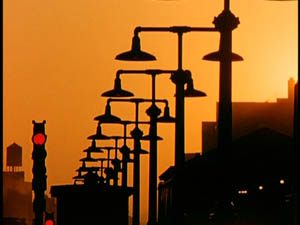
Daybreak Express offers a pleasant surprise, coming from one of the pioneering directors of Direct Cinema, D.A. Pennebaker. Daybreak Express is a late entry into the city symphony film, beginning in the orange glow of daybreak and ending in the blue sky of late morning, all set to the music of Duke Ellington. Pennebaker often films from a moving subway car; and the film’s expressive camera angles (extreme low angles), camera movements (spinning on axis), wide angle and fish eye lens distortions, and montages (rhythmic and metric and pixilated) are not what one would expect from one of the pioneering directors of Direct Cinema. During the commentary track Pennebaker outlines some of his influences for the film (citing the painter John Sloan, one of the ‘ashcan school’ of NY painters, and a poem by Ezra Pound). He also includes an interesting account of its exhibition history (how it played first in Paris, then Germany, and played at the Paris Theatre along with the British feature The Horse’s Mouth (1958, Ronald Neame) for a whole year.
Two of the finer newer films in the American collection are Terminal Bar (2002 Stefan Nadeleman) and The Wraith of Cobble Hill (2005, Adam Parrish King). Even though the latter is a clay animation film and its director a graduate of USC, both films are infused with the mood and history of New York City. Terminal Bar is a mainly photographic history of the titular bar on the corner of 8th avenue and 42nd street, using the 2500 black and white photographs taken by the filmmaker’s father (Sheldon Nadelman) while he was a bartender there from 1972-1982. The flash animation photo montage is also intercut with interview footage of Sheldon, who reveals trade secrets (placing cheap alcohol into name brand bottles) and gives brief biographical notes on customers as their photos appear on camera. The bar was frequented by boxers, cooks, drunks, low lifes, psychiatric patients, local celebrities, and the odd star, like Gene Tierney (no surprise there). At some point after the old wave of regulars grew old and died the bar became a regular hangout for gay black men. The film ends with Sheldon returning to the corner where the bar was, commenting that nothing has really changed socially in that area, and that “New York is still shitty.” Not exactly an endorsement. The film’s use of mostly black and white photography, funky music, and innovative use of flash animation gives the film a genuinely fresh feel. As I watched it I wondered if the real life character of Sheldon Nadelman had been an influence on Wayne Wang’s Smoke (1995), the film about a Brooklyn corner cigar shop where its owner, played by Harvey Keitel, took a photograph from in the same spot in front of the store every morning for 14 years.
In the director commentary of The Wraith of Cobble Hill King states that he lived for several years in Cobble Hill, Brooklyn, and the history of the location, the environment, and the way the neighbors live in close proximity to each other, is what inspired him to make the film. This experience helps explain why a black and white, almost expressionistic clay animation manages to render a sense of place and atmosphere, and a certain mental laziness of the film’s central teenage character, Felix. A Polish immigrant named Mr. H. asks Felix to look after his convenience store and feed his dog while he is away for a short trip. Felix exploits the man’s trust by bringing in friends, stealing items, and overlooking the poor dog. In some respects this is another ‘coming of age’ tale where the teenager, Felix, must come to terms with his own apathy and the trust confided in him by the storekeeper. In a brief and not entirely clear scene we see Mr. H seated at the side of his bed, crying, holding a pair of broken glasses –his wife’s. The meaning of this scene –that his wife has died– is made more apparent in a later scene. Felix is lazing about in bed and hears a thud coming from the apartment above, Mr. H’s. He goes up the fire escape stairs to investigate through a back window and sees Mr. H hanging from a noose. How does Felix react to this encounter with death? He returns to the now rat-infested store and steals a few more items, but compassion and responsibility seems to takes over and he takes the dog with him as he leaves the store. In King’s interesting commentary he recounts technical issues (filmed with a Bolex camera, at one and two frames at a time), production history (it took him five months to build the sets, fours to shoot the film) and how the serendipity of a lab mistake led to certain shots having an extra hazy, halo effect which, in hindsight, worked well for the film.
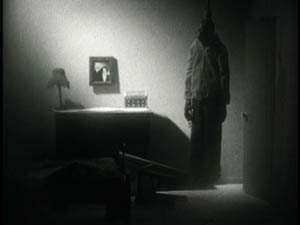
The two most important of the older films in this collection are Necrology and Meshes of the Afternoon. The former is the real treasure of the collection, since it has never been available on DVD before, to my knowledge –and comes with a commentary track by Standish Lawder– whereas the Maya Deren film has been available on DVD before. Necrology is living proof (pun intended) that experimental film need not be serious or dumbfounding. It also fits in nicely with the short film format bias of the surprise or twist ending. In this case the audience is presented with a perceptual puzzle. As we view grainy black and white footage of people paired in twos, facing the camera, ascending upward, we ask ourselves, are we seeing a camera moving in a long vertical tilt along a row of people, or are the people somehow moving up on a platform? If the latter, however, wouldn’t they be facing the other direction? Only during the four minute long closing credits presenting a mock list of people we have just seen (man with migraine, yawning woman, pornographer, woman with canker sore on insde of left cheek, etc.) does the film reveal its sense of humor (almost Pythonesque in its absurdity).
The film was achieved by filming people coming down an escalator in Grand Central station in reverse. Lawder placed his 16mm Airiflex camera on a platform he built facing the escalator on top of an 16 foot stepladder, using a 400 foot magazine at rush hour. He used a long 100 mm lens, which allowed him to keep far away and out of sight of the traveling people. He also used a grainy Kodak 4X negative film stock, pushed 2 stops in the printing process and shot in slight slow motion (32 fps) to give the film more of a dreamy feel, while cutting down on detail and clarity which may have given away the illusion (and in fact on a few occasions we can catch a glimpse of the escalator stairs). The illusion works well because many of the actions and gestures of the people are symmetrical, and hence feel natural in both forward and backward movement: smoking a cigarette, shifting a newspaper in hand, talking, moving one’s head and arms, fixing a neck tie, placing a hand into a pocket, turning around, blowing theri nose, bending down, yawning, etc. However, there are also certain movements which appear odd in reverse which the more observant viewer will have picked up on, like the person stepping backwards onto a step, or the man fixing his hair or touching his forehead. What is fascinating is that even after we are told of the illusion it is hard to perceive it as what it is: people moving down an escalator in reverse, rather than as a big crane movement or people riding up a platform. When we shift out of the pro-filmic to what we perceive, the film takes on other meanings (intended by Lawder), such as a (literal) ‘stairway to heaven’ suggested by the title (a roll call of the dead).
In his useful commentary track Lawder reminisces that in his youthful, headier days he would refer to the film as an “anthropological study of life and death in NY,” which he now sees as preposterous! We learn that the film was initially intended as part of a larger study of human faces, an “endless flow of humanity,” which fell through, and that the idea to run the action backward came about quite by chance, when, out of laziness while examining footage, he let the film run back in the projector rather than rewinding it. Only when he saw the effect of the images in reverse did he get the idea to construct the film in its present form (and incorporate all the above noted formal elements, plus the overly serious classical piece, Sibelius’s Symphony No. 1), to color the tone of the film.
Meshes of the Afternoon, co-directed by Maya Deren and Alexander Hammid, is still as fresh today as when it was made in 1943 and remains one of the most important –and earliest– American avant-garde films. Seen today one is struck by how important the sound track is, alternating between Japanese-flavored instrumental music (at times reminiscent of the score for Ugetsu) and silence. The film is a literalization of the expression, “chasing your shadow” only here the waking dreamer fails to realize that the shadow she is chasing will lead to a dark corner, her own death field. Structurally the film hinges on the motif of the triplet. The action of Deren entering and searching through her home occurs three times; there are three incarnations of the Deren character and three interconnected objects, a key, a knife, and a flower. The sense of a dreamscape is channelled to the viewer through slow motion, kinetic camera movements that give the impression of free falling, and poetic edits that use continuity match cuts to fuse together illogical spatial links (inter-cutting between Deren in her home and at the beach, foreshadowing the more extensive use of this device in At Land). Although canonized by P.A. Sitney in his seminal book Visionary Film as a ‘trance film’ or ‘psycho-drama,’ Meshes of the Afternoon also prefigures several conventions of the horror film. For starters, the film has a brooding atmosphere which becomes darker with each repetition of the central character’s walk through her home. The Cabinet of Dr. Caligari is often cited as an influence on the trance film, with Conrad Veidt’s somnambulist character Cesare as the original ‘dreamscape sleepwalker.’ The knife-yielding Cesare’s penetrating invasion into a female character’s home can also be seen as the progenitor of the modern stalker figure. However, Meshes of the Afternoon goes further in this regard by introducing the signature subjective point of view shot, as the Deren character’s entrance into her home is captured through a first person moving camera shot that even foreshadows the archetypal gesture in ??Halloween??’s opening shot, of subjectively moving toward a knife.
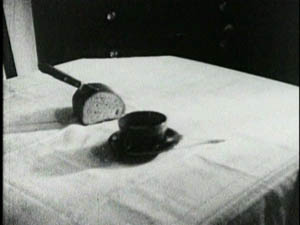
Meshes of the Afternoon also prefigures the classic ‘waking dream’ structure so common to the modern horror film, where a character experiences near death, only to awake from a dream, at times not once, but twice, a ‘double’ dream effect, or ‘dream within a dream.’ Meshes of the Afternoon also contains a similar double ending. In the first ending the woman is about to be stabbed by her visual alter ego (wearing goggles) but is awakened by a man (played be her husband and co-director Hammid), who then reassures her it was a dream by taking her through the apartment. In the second ending the man returns home to find the woman sitting dead on the sofa chair, her throat slashed, with a shard of glass in hand and broken glass on the floor around her. The Cinema 16 transfer is from a 16mm print which shows its age and grain, but does not detract from the viewing.
Another short with horror film references and one which clearly looks ahead to the director’s future work is Vincent (1982) by Tim Burton, which depicts the imagination of a seven-year old boy who dreams of being Vincent Price. The story is structured to match the rhyming of a poem, also written by Burton, which shifts between the little boy’s reality (his sister, dog, aunt, mother, etc.) and his fantasy (reading Poe, imagining putting his aunt into a vat of wax, turning his dog into a zombie, etc.). Shot on 16mm in black and white, the visual style looks back to the root of his mature style (German Expressionism), with twisted and angular set design (a staircase shot in profile that looks like a series of jagged teeth), chiaroscuro lighting and an imagined duality of fantasy vs. reality.
Two other recognizable directors appearing on the collection with minor works are Alexander Payne and Todd Solondz. Both films represent early student efforts shot on super 8 (and the poor image quality is an indication of this). Payne’s Carmen (1985) is a silent film-styled adaptation of Carmen, using the music from the famous opera alongside the story of unrequited love, here between a dim-witted, saliva drooling gas station attendant, Joey (Joe Marinelli), and a red hot Carmen (Khorshield MacHalle), who exploits him for free gas, tacos and ding dongs. Payne –who expresses his admiration for silent comedy in his commentary track– appropriates the language of silent film fairly well, with funny looking characters, men in drag (the man’s mother is played by a fat, bearded man in a loud patterned dress), exaggerated facial gestures, and, at times, slightly under-cranked filming. In the end, however, it misfires because it is rarely funny, largely because the visual humor never relies on intricate, developed gags. The DVD liner notes make an error on the date, listing the 1985 film as 1970. Feelings is Solondz’s first sound film, a school exercise in non-synch sound using music. A nerdy young man (played by Solondz) appears on a dreary beach (shot at Coney Island) singing the pop song “Feelings” (badly I might add) in voice-over, first in English then in Spanish, as he prepares to commit suicide by drowning himself in the Atlantic Ocean. As he jumps off the low lying rocks into the ocean an overweight older woman appears in the distance, lumbering toward the foreground, settling her heavy body on the rocks, where she burrows her head into her arms and cries her eyes out. The scene cuts to the final shot: the young man dressed as an angel framed against a black background. At only three minutes, the rough looking, grainy, black and white Feelings is clearly a very minor work with appeal for completists only, and yet its campy melodrama, mixture of comedy and tragedy (as noted on the commentary by Jordi Costa, author of a book on Solondz written in Spanish) is strangely affective.
One of the few films in the American collection to be conditioned by a sense of place which is not either New York or California is Paper Boys, Mike Mills’ free form documentary on one of the icons of Americana: the paperboy. Paper Boys, which Mills says in his commentary was influenced by the Maysles brothers Salesman, was shot in a lower middle-class suburban town of Stillwater, Minnesota. Mills interviews six teenage boys aged 11 to 14, asking each boy a set of similar questions revolving around their work and their interests (sometimes with the questions heard on camera): How do you imagine your future? Do you think paperboys will be around in 20 or so years? What are your interests and hobbies? What’s a good kid, what’s a bad kid? Who are your idols? Although they are all white, most of them love rap music, which is an indication of how well the record companies have commodified and marketed rap music. The last boy interviewed, Greg, talks about his love of The Godfather movies and gangsta rap music. The most striking similarity among the young boys is how strongly their life and sense of identity is invested in materialism. When asked what they want to be in the future, the common reasons are monetary (“to make a lot of money”); For all the boys their identity is wrapped up in their material possessions: CD’s, movies, television sets, entertainment units, computers, video games, posters, bikes, toys, etc. Like Five Feet High and Rising, the film keeps the presence of adults to the perimeter, focusing on the boys and their world. He visits each of their rooms, at times the movement of the camera overstating its point (or saying more about the director than the subject), like the shots which continually pan away from the subject to the life-size photo of the hunky professional wrestler Stone COld Steve Austin. If this is a representation of what the future holds for these American boys, then it is the traditional triumvirate of cars, sports, and money. Only the last boy, Greg, is what you would call articulate, as all the others reiterate obvious or vague ideas of what they feel about themselves or their ‘profession.’ The sense which the film tries to evoke –not unlike Salesman??– is that the loss of the paperboy tradition signals a larger loss of a sense of community. Mills is forthright about this in his commentary, saying that what intrigued him about the subject is how it paralleled a change in American middle-class values, reflected in this tension between the old and the new. In this respect he laments not focusing more on the class issues, which are implicit in many aspects of the film. Even though the film has a quiet melancholia, director Mills is ultimately an optimist, ending the film with a shot of a paperboy riding his bike along a traditional tree-lined street as the camera cranes up to a hopeful blue sky (forming an interesting parallel to ??About a Girl, where a similar formal gesture is used ironically).
European Short Films
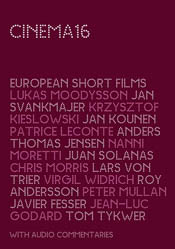
Although all three volumes in the Cinema 16 series are excellent, the strongest for this viewer is the European collection. To explain this one may point to the fact that this is the most ‘auteur’ heavy of the three volumes (featuring films by Jean-Luc Godard, Lars von Trier, Roy Andersson, Patrice Laconte, Tom Tykwer, Nanni Moretti, Krzysztof Kieslowski, and Jan Svankmajer), but some of the strongest films of the collection come from newcomers and relative unknowns (Lukas Moodysson, Virgil Widrich, Juan Solanas).
One of these opens the collection, Moodysson’s 1997 Bara Prata Lite (Talk), an unsettling character study of a late middle-aged man, Birger (Sten Ljunggren), who wanders through life yearning for human contact. We first see him on a bus, making small talk to a girl –who avoids him– telling her he works at Volvo. We then see him at a Volvo plant, trying to give an employee a helping hand with his work, but receiving a cool rebuke. He receives the same reception at a restaurant, where an impatient employee tells him to leave and that he no longer works there. By now we realize he is a disturbed man who has not adjusted to whatever slings mid-life have thrown at him. He returns home and begins to make a series of crank phone calls, each becoming increasingly more aggressive. In the last he makes sexual advances toward the person (woman we assume) at the other end of the line. Just as the call comes to an abrupt end and he places the receiver down, the door bell rings. And, as if fate has unjustly turned to his side, a young attractive woman soliciting for Jehovah’s Witness appears at his door. Even though the man has not shown any overt signs of violence, we immediately feel for the safety of the woman. And our fear becomes warranted when his passive aggressive behaviour alerts the young woman to the potential danger. After uncomfortable small talk she tries to leave his apartment but he forcibly restrains her, throwing her onto the floor and accidentally killing her. Rather than adjusting to the act, he simply lies her down in bed and proceeds to watch television with her, acting as if she were a living companion. Everything in the film is understated. No music, no sinister lighting, just a restraint performance of a quietly disturbed man, at once sad, pathetic, and terrifying. Director Moodysson injects tension in subtle ways, like the unexpected cut to an imposing low angle shot of Birger as he rises to block the young woman’s path from couch to door. This is followed by a shot which registers fear on her face for the first time. On the commentary track director Moodysson calls this his ‘Swedish Psycho,’ in reference to the Mary Harron film of 1999 An American Psycho, and notes the cultural differences that shape the films. Whereas the killer in Harron’s film is born out of an American cultural context –consumerism– the killer in his film is a product of what he calls a “Swedish sickness –loneliness.”
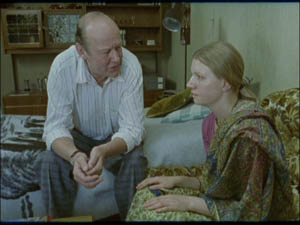
The collection provides some breathing room with the lighter toned second film, Patrice Locante’s two-shot film Le Batteur du Bolero (Bolero’s Drummer, 1992). After a brief opening shot which begins at the back feet of an orchestra conductor, then tilts up his body, the film cuts a seven minute plus long take that dollies forward, to the left of the conductor and around the orchestra, and continues to dolly lateral across the stage settling at a medium close-up profile shot of the drummer, where it remains for the duration of the film, capturing the drummer’s every little wince, gesture, and sigh of exasperation as he plays along to the monotonous rhythm of Ravel’s “Bolero” (you can hymn it to yourself).
As we learn from the commentary (and would have surmised from the performance), the player is not a real drummer, but a comic actor, Jacques Villeret (playing to a recording, not live). Laconte admits that he has always found this music boring…but was always fascinated by what a drummer would be doing during the piece. Laconte had this perverse idea in his head for years, but it became a reality only when he mentioned it to Cannes Festival director Gilles Jacob, who loved the idea and told him: you make and I’ll show it (so is that how it works at the big festivals?).
A playful tone is continued with the next film, also French, Jean-Luc Godard’s New Wave run through, Charlotte et Veronique, ou tous le garcons s’appellent Patrick (1957). Factoring in the age of this film, Cinema 16 presents an excellent looking transfer (one of the best in the collection). Charlotte et Veronique clearly foreshadows Breathless and the New Wave style in many respects: the focus on young, urban people who are restless, always in movement; the fresh and frank approach to sexuality and male-female relations; the promiscuous male; the on-location cinematography and use of natural light; reflexivity (all the people sitting in cafes are reading cinema mags); and the filming of interior spaces (the way the flat is lit and decorated with art posters); the parallels between women and art (a woman is framed with a painting behind her on the wall in one shot). The one glaring difference is in the use of ‘coincidence’: two female friends meet and set up a date with the same man. Only in the final scene do the two friends learn that they have been duped by the man –when they see him on the street with yet a third woman– but it doesn’t bother them in the least. Cinema 16 did well to entrust the commentary track to British film scholar and Francophile Colin MacCabe.
As noted earlier, two of the strongest films in the European collection are from relative unknowns, Copy Shop 2001, by Virgil Wildrich and L’Homme sans tete (The Man Without a Head, 2003) by Juan Solanas. Copy Shop is a perfect example of the prime strength of the short film format: take one good idea and go with it just before it becomes tired. Director Wildrich takes the simple premise of a copy shop worker becoming a subject/victim of his own device. The film develops from a simple premise: what would happen if a human being can be photocopied like a sheet of paper? While working the photocopier the lead character accidentally copies his hand, which triggers the endless duplication of his being. He wakes up the next day into a new spatial and temporal world order, where his reality enfolds upon itself and different points in the film co-exist at the same time. Similar to Groundhog Day, where the Bill Murray character wakes up endlessly to repeat the same day, the character is here physically repeated into the same space and time. He walks into his bathroom, stares into the mirror and exits, while another version of himself moves into the bathroom to replace him. Once he arrives at his shop there are a dozen of him waiting there for him. The black and white film was downgraded to increase grain and contrast to emulate a silent film aesthetic, perhaps as a nod to Buster Keaton’s 1921 silent comedy classic The Playhouse, which employed a similar effect of duplication where Keaton used (mainly) in-camera effects to allow him to play every member of an orchestra, the stagehands, and audience. The film concludes with perhaps another tip of the hat to Keaton, in this case his sublime short film Cops, where he is chased through the streets by dozens of police officers. In Copy Shop the man is chased to the rooftop by his army of doubles, and jumps off into a field of clones lining the city street below (280 according to the commentary track by Wildrich).
For the technically inclined, Wildrich’s commentary track is especially helpful because it explains the process behind the film’s duplication effects. The film was shot with a digital camera, with each frame copied to nearly 18,000 digital frames, which were then animated (like a flip book) and shot on 35mm. The result is a perfect example of a film where form and content are indissoluble; a film about copied paper made out of copied paper. This process is revealed in a wonderfully subtle reflexive moment where we see an edge of the paper fluttering (perhaps another nod to Keaton, who was the first silent comedian to consistently inject touches of reflexivity in his films). Even the minimalist ‘repetitive’ music by Alexander Zlamal reflects this ‘indissoluble form-content.’
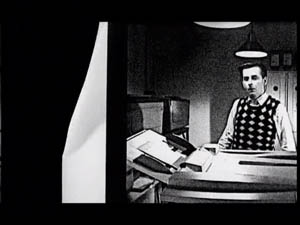
For the theoretically inclined, the film can be seen as a coy adaptation of Jean Baudrillard’s postmodern concept of the ‘simulacrum’: an image without a clearly defined reference point in reality, a product of an image-intense society where the link between the signifier-signified is broken down.
The visually spellbinding L’Homme sans tete shares this thematic/formal motif with Copy Shop (along with Doodlebug): repetition. Employing a seamless combination of live action and computer animation, Solanas constructs a strange yet believable world that looks like a distillation of every dystopian cityscape imagined. A world where headless people can walk into a shop and try on a head like a pair of new shoes (giving a wholly new meaning to ‘head shop’). The long walks the headless man Phelps takes to the shop through the city are reminiscent of those taken by Dr. Treves (Anthony Hopkins) in Lynch’s The Elephant Man. One can also read the film as a social allegory on race. For example, in the depicted society headless people are minorities, and in one scene we see Phelps try on a black head, which brings him great pleasure, until he looks down and notices his white hands.

Three early shorts by established directors represent clear templates for later works: Epilog by Tom Tykwer, Germany, 1991), Harlig Ar Jorden (World of Glory) by Roy Andersson, Sweden, 1991 and Nocturne by Lars von trier, Denmark, 1980. The strongest of the three is Harlig Ar Jorden (World of Glory) Roy Andersson, Sweden, 1991, a run through for his next film, the feature Songs from the Second Floor (2001). Like the latter film, World of Glory employs a rigid, minimalist formal style (long take sequence shots filmed with static camera, concentration of long shot range, sparse art design, muted colors) and deadpan acting to erect an Expressionist satire on contemporary Swedish values. The film opens with a haunting, unexplained opening shot: a group of nude humans, men, women and children, are herded into the back of large truck and executed by exhaust fumes which are directed back into the hull of the truck by a tube. This charnel-house truck –which can be seen as a reference to the Nazi concentration camps– reappears in the background of a later shot through a storefront window. In the enlightening commentary track director Andersson confirms the Holocaust allusion, admitting that although these atrocities did not happen in Sweden, issues of race biology were prevalent in Sweden at that time.

The film’s final shot is just as haunting as the first. Shot in silent film styled color tinting, the lead character, standing in his bedroom in front of his wife in bed, places his hands over his ears in a recreation of the Munch’s famous painting The Scream and whimpers pathetically to his wife, “There is someone screaming” (the faint sound of a person screaming in pain is heard off-screen, which, as Andersson notes in the commentary track, is meant to link back to the opening scene and the crying girl forced into the truck).
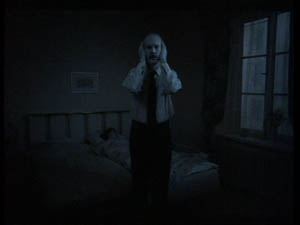
The film is quite indescribable in terms of genre. Is it comedy? Surrealism? Social satire? Indeed, is it even science fiction, in that the people we see are only pale shadows of human beings. They exhibit either no emotion, or too much, and their stiff movements and ghost-like faces could suggest an aliens-have-taken-over scenario. For example, why do people periodically turn their head to acknowledge the camera, as if looking for approval from some omnipotent off-screen presence? Sweden as envisaged by Andersson is populated by pasty, grey-faced (mainly) men wearing grey suits, ties and briefcases in hand: the typical ‘salaryman’ or Volvo employee. In the enlightening commentary track director Andersson says that the film is a condensed and simplified reflection of Swedish mentality and their value system. Based on what we see, we can extrapolate this to mean things such as order, functionality, pragmatism, material comfort, guilt, and alcoholism.
Alongside the film’s intriguing content is an interesting narrative structure. The film is sixteen minutes long, comprised of fifteen shots which are self-contained scenes. Each of the scenes is ‘pillowed’ by black leader which lasts three to five seconds. The structure looks like this (length of the shots in parenthesis):
Opening Credits 0-0’45”
Scene 1) 0’45”-2’46” (1’01”). Black Frames 2’46”-2’50” (04”)
Scene 2) 2’50”-3’43” (53”). BF: 3’43”-3’46” (03”)
Scene 3) 3’46”-4’23” (37”). BF: 4’23”-4’26” (03”)
Scene 4) 4’26”-4’54” (28”). BF: 4’54”-4’59” (05”)
Scene 5) 4’59”-5’29” (30”). BF: 5’29”-5’33” (04”)
Scene 6) 5’33”-6’24” (51”). BF: 6’24”-6’28” (04”)
Scene 7) 6’28”-6’48” (20”). BF: 6’48”-6’53” (05”)
Scene 8) 6’53”-7’46” (53”). BF: 7’46”-7’50” (04”)
Scene 9) 7’50”-8’25” (35”). BF: 8’25”-8’28” (03”)
Scene 10) 8’28”-9’11” (43”). BF: 9’11”-9’16” (05”)
Scene 11) 9’16”-10’32” (1’16”). BF: 10’32”-10’36” (04”)
Scene 12) 10’36”-11’49” (1’13”). BF: 11’49”-11’54” (05”)
Scene 13) 11’54”-12’36” (42”). BF: 12’36”-12’40” (04”)
Scene 14) 12’40”-13’50” (1’10”). BF 13’50”-13’55” (05”)
Scene 15) 13’55”-14’45” (50”)
Closing Credits 14’45”-15’45”
Not counting the black frames, the film has an exceedingly high average shot length (ASL) of 56”.
As much as the Andersson short, Tykwer’s Epilog is the blueprint for a later breakthrough feature, Run Lola Run (1998). In this case an act repeats (once here, not three times) with a different conclusion the subsequent time (another instance of the noted theme of repetition discussed earlier). The camera tracks 360 degrees around a young couple in deep argument. When the woman tells the man to “piss off,” he quietly sits by the side of the bed, takes a gun out of the night table and shoots the woman. The next scene begins as if a flashback to the actions that led to this murder, and plays out identically, safe for the twist: the gun is no longer in the drawer, but in the woman’s hands. In a comically reflexive gesture the man notes the change and says out loud –“This isn’t right!”– moments before he is shot by the woman. The feel of the film, with the circular camera movements and the interior domestic setting recalls Fassbinder’s Chinese Roulette (1976). Although a simple exercise in ‘non-reliable’ flashback, or, as Tykwer notes in the commentary track, an exercise in “how time effects narrative structure,” the execution is perfect; and there are enough subtle touches that warrant repeated viewings. Tykwer’s commentary track is one of the better on this volume, blending production history, discussing influences, and venturing analysis (something which too few directors are up to).
The third ‘blueprint’ short is Lars von Trier’s Nocturne, an eight minute short made as his graduation project for The National Film School of Denmark which bears a strong relationship to Elements of Crime and Zentropa. The film is an exercise in creating a mood of extreme claustrophobia or agoraphobia. The premise is simple. A young woman terrified of daylight must muster up the courage to leave her apartment to catch an early morning flight. The cinematography steals the show, rendering her room a tenebrous cavern of murky colors and shifting tones, splintered by a deep red ceiling bulb. The use of slow motion and barely audible music, sound, and hushed voices add to the sense of quietude. As Trier reveals in the commentary, the film was greatly influenced by Andrei Tarkovsky (especially The Mirror), which is particularly evident in an overhead slow motion shot where pieces of paper rain down onto her grounded body. This commentary track by Trier and his cinematographer Tomas Gisslasson is one of the most entertaining in the collection. Both filmmakers have fun remembering the film, interpreting its meaning, and poking fun at their own youthful pretensions (their fixation on ‘geometrical spacing,’ explained as a visual design of moving lines from vertical to horizontal).
The European volume also includes two British shorts which couldn’t be different in tone, the Scottish Fridge, directed by Peter Mullan and My Wrongs#8245-8249 and 117, directed by the English Chris Morris. Fridge is a bleak, depressive, black and white slice of life in a rundown council estate in Govanhill, Glasgow. The central protagonists are two alcoholics, Rudy (Gary Lewis) and his girlfriend Alice (Vickie Masson ). A run-in with a couple of threatening teens leads to a third young boy being accidentally locked inside an icebox. The trapped boy serves two functions, one dramatic, one symbolic. In the former sense the incident places these hapless people in an unlikely position of responsibility, having to figure out how to open the icebox before the boy suffocates to death. In the symbolic sense, the fridge functions as a metaphor for social/class entrapment, made clear with the high angle shot which zooms out to frame the woman engulfed between the grey, decrepit buildings. We also see other people framed peering through their doors and windows, as if afraid to venture out into the bleak landscape.
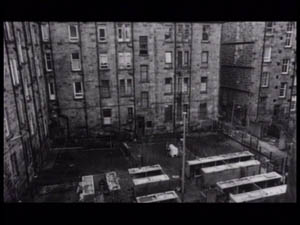
Morris’ film is a comic variant (with a dark edge) on the premise of the talking dog, or the man who thinks he has a talking dog (no one else but the man ‘hears’ the dog talk). Earlier versions include the films A Boy and His Dog, Lucky, and the classic science fiction novel Sirius. The comic variant of the man and his talking dog is like the dummy and the ventriloquist, with the ventriloquist (man) as the comic foil to the dummy (talking dog). In this case the talking dog –a Doberman named Rothko– is the man’s lawyer and continually gets the young man into embarrassing and dangerous social situations. An example is the following hilarious exchange between the dog, the man, and a bus employee asking for fare.
Bus Employee: Have you got any money?
Dog to the Man. Ask to pay on account.
Man to the Bus Employee: Could we…uh…pay on account?
Bus Employee: Off the next stop please.
Dog to the Man: Oh, now you’ve upset the flaky old cock.
Man to the Bus Employee: He didn’t mean to call you that.
Bus Employee: What?
Man to the Bus Employee: Flaky old cock.
Perhaps it is fitting that this unusual film comes with a unique commentary track by the film’s production runner, simply named Nick, which is a ‘running commentary’ on the film, rather than about the film. For example, at one point he digresses to discuss the relative merit of films with dog in the title (White Dog, Dog Star Man, Un chien andalou, Dog Day Afternoon, etc.).
The single Italian entry in the collection is Nanni Moretti’s Il Giorno della Prima di close-Up (The Opening Day of Close-Up), an enjoyable and not so subtle satire on a) the archaic and philistine habits of Italian film goers, who prefer dubbed to subtitles films, and American films to art films; and b) an auto-critique of his own (apparently) obsessive and perfectionist nature. Moretti stars as himself, a neurotic producer/independent theatre owner preparing for the opening day of Kiarostami’s Close-Up. Moretti comes across as a control freak, telling the receptionist and ticket taker how they should address customers, asking the concession clerk what type of sandwiches they have, or asking the projectionist to raise the volume a sliver. The film is book-ended by figures which demonstrate the dominance of Hollywood, a theme he deals with in Caro Diario and Aprile. It opens with Moretti measuring the size of different movie ads in the newspaper, noting how much larger the ads for the commercial films are than the one for Close-Up. It ends with him waking up in the middle of the night to hear the box-office results of the previous day, with mainstream American films having out grossed Close-Up ten-fold.
The flagship volume for the Cinema 16 series was the British compilation. Its success prompted the second volume, on European directors, which was subsequently followed by the third volume, on filmmakers from the United States. The wonderful diversity of films across these three DVDs are testament to the particular joys of the short film. The handsomely produced DVDs also include valuable supplementary material in the form of commentary tracks and succinct liner notes and credits for each film. We can only hope that this celebration of the short film has only begun and that Luke Morris is hard at work on an Asian or Canadian volume!
British Short Films
1) About a Girl (Dir. Brian Percival, 2001, 10 mins.)
2) Boy & Bicycle (Dir. Ridley Scott, 1958, 27 mins.)
3) Dear Phone (Dir. Peter Greenaway, 1976, 17 mins.)
4) Doodlebug (Dir. Christopher Nolan, 1997, 3 mins.)
5) Eight (Dir. Stephen Daldry, 1998, 13 mins.)
6) Gasman (Dir. Lynne Ramsey, 1997, 15 mins.)
7) Girl Chewing Gum (Dir. John Smith, 1976, 12 mins.)
8) Home (Dir. Morag McKinnon, 198, 11 mins.)
9) Joyride (Dir. Jim Gillespie, 1995, 10 mins.)
10) Inside-Out (Dir. Tom & Charles Guard, 1999, 7 mins.)
11) Je T’aime John Wayne (Dir. Toby Macdonald, 2000, 10 mins.)
12) The Sheep Thief (Dir. Asif Kapadia, 1997, 24 min.)
13) The Short and the Curlies (Dir. Mike Leigh, 1987, 17 mins.)
14) Telling Lies (Dir. Simon Ellis, 4000, 4 mins)
15) UK Images (Dir. Martin Parr, 1997, 6 mins.)
16) Who’s My Favorite Girl? (Dir. Adrian J. McDowall, 1999, 15 mins.)
American Short Films
1) The Lunch Date (Dir. Adam Davidson, 1990, 11 mins)
2) Five Feet High and Rising (Dir. Peter Sollett, 1999, 29 min)
3) Freiheit (Dir. George Lucas, 1966, 3 mins)
4) Daybreak Express (Dir. D.A. Pennebaker, 1953, 5 mins)
5) Vincent (Dir. Tim Burton, 1982, 6 mins)
6) Terminal Bar (Dir. Stefan Nadelman, 2002, 22 mins)
7) Terry Tate: Office Linebacker (Dir. Rawson Marshall Thurber, 2003, 4 mins)
8) Necrology: Roll Call of the Dead (Dir. Standish Lawder, 1969-70, 12 mins)
9) The Discipline Of D.E. (Dir. Gus Van Sant, 1982, 13 mins)
10) The Wrath of Cobble Hill (Dir. Adam Parrish King, 2005, 15 mins)
11) George Lucas in Love (Dir. Joe Nussbaum, 1999, 8 mins)
12) Meshes of the Afternoon (Dir. Maya Deren, 1943,15 mins)
13) Carmen (Dir. Alexander Payne, 1985, 18 mins)
14) Feelings (Dir. Todd Solondz, 1984, 4 mins)
15) Paperboys (Dir. Mike Mills, 2001, 41 mins)
16) Screen Test: Helmut (Dir. Andy Warhol, 1964, 5 mins)
European Short Films
1) Bara Prata Lite Talk (Dir. Lukas Moodysson, Swedish, 1997, 14 mins.)
2) Le Batteur du Bolero The Drummer of Bolero (Dir. Patrice Leconte, France, 1992, 8 mins.)
3) Charlotte et Veronique, ou tous le garcons s’appellent Patrick Charlotte and Veronique, or all the boys are named Patrick (Dir. Jean-Luc Godard, France, 1957, 21 mins.)
4) Copy Shop (Dir. Virgil Wildrich, Austria, 2001, 12 mins.)
5) Epilog (Dir. Tom Tykwer, Germany, 1991, 12 mins.)
6) Fridge (Dir. Peter Mullan, Scotland, 1996, 20 mins.)
7) Il Giorno della Prima di close-Up The Opening Day of Close-Up (Dir. Nanni Moretto, Italy, 1996, 7 mins.)
8) Gisele Kerozene (Dir. Jan Kounen, Holland-France, 1999, 4 mins.)
9) Harlig Ar Jorden World of Glory (Dir. Roy Andersson, Sweden, 1991, 16 mins.)
10) L’Homme sans tete The Man Without a Head (Dir. Juan Solanas, France, 2003, 18 mins.)
11) Koncert Zyczen Concert of Wishes (Dir. Krzysztof Kieslowski, Poland, 1968, 16 mins.)
12) Jabberwocky (Dir. Jan Svankmajer, Czech Republic, 1971, 13 mins)
13) My Wrongs#8245-8249 and 117 (Dir. Chris Morris, 2003, UK, 12 mins)
14) Nocturne (Dir. Lars von trier, Denmark, 1980, 8 mins.)
15) El Secdleto de la Tlompeta (Dir. Javier Fesser, Spain, 1995, 18 mins.)
16) Election Night (Dir. Anders Thomas Jensen, Denmark, 1998, 11 mins.)



